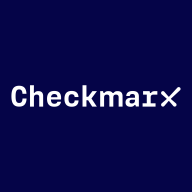

Checkmarx One and SonarQube Server are key players in the application security testing tools market. Checkmarx One holds an edge through its seamless integration across environments, delivering superior pricing satisfaction, support, and comprehensive analytics.
Features: Checkmarx One offers an extensive security analysis suite efficient in identifying and remediating vulnerabilities. It supports a wide array of programming languages and ensures ease of use. SonarQube Server offers detailed quality metrics analysis, extensive plugin support, and seamless CI/CD integration enhancing code quality visibility.
Room for Improvement: Checkmarx One could improve in reducing false positives, enhancing license flexibility, and boosting dashboard customization. SonarQube Server may benefit from stronger security analysis capabilities, expanding its language support, and reducing false alarms to boost user satisfaction.
Ease of Deployment and Customer Service: Checkmarx One supports various deployment models, including on-premises and cloud, and receives high ratings for customer service. SonarQube Server provides flexible cloud and on-premises deployment, praised for robust technical support with room for enhanced response times.
Pricing and ROI: Checkmarx One, while in a higher price range, offers a strong ROI by facilitating safe deployments and avoiding costly breaches. SonarQube is cost-effective with a free community edition and premium features accessible via tiered licensing, ideal for smaller operations but recognizing potential investments in commercial plugins for full utility.
We see productivity increasing based on the fact that the code review is mostly automated, allowing the developer to fix the code themselves before assigning it to someone else to review, thus receiving that ROI.
I have seen a return on the investment from SonarQube Server (formerly SonarQube) because the value it adds relates to static code analysis and vulnerability assessments needed for our FDA approval process.
It's more about maintaining standards and being able to prevent issues before they occur.
They showed us where we can actually get those granular level reporting extracted for Excel, which was a quick guide.
The community support is quite effective.
I would rate the technical support for SonarQube Server (formerly SonarQube) as a 10 because we have not faced any specific issues that required us to contact tech support, which is a very rare case.
I find SonarQube Server (formerly SonarQube) very scalable because we're able to create a new repository and integrate all the tools on that project and it just works.
I would rate the scalability of SonarQube Server as a 10 because we can configure the server to scan multiple projects based on the number of lines.
I would rate the stability of this solution a nine on a scale of 1 to 10 where one is low stability and 10 is high.
I think SonarQube Server (formerly SonarQube) is stable, and we did not face any problems unless there was a power outage or if the LAN cable was plugged out.
It could suggest how the code base is written and automatically populate the source code with three different solution options to choose from.
We need to change it to more of a portfolio report, where configuring or setting up things on the portfolio requires tagging at the ADO level.
As soon as I see that they've got a new feature that integrates AI that is not as generative as other GenAI platforms that actually generate the code and help developers develop faster, I believe that capability is lacking.
If I fix some vulnerabilities today, they reappear in the next scan, and there will be completely different issues that need to be fixed.
I would rate the pricing for SonarQube Server (formerly SonarQube) as an 8, where 1 is very cheap and 10 is very expensive, because Coverity is very expensive, and while SonarQube is not cheap, it is still less expensive than Coverity.
They always offer around a two-year contract, but we always take a one-year contract because it's expensive.
The freemium version of SonarQube Server offers excellent value, especially compared to the high costs of Snyk.
My experience with the initial setup of Checkmarx One is straightforward; it is not complex compared to other tools that I have tried.
The most valuable features of SonarQube Server (formerly SonarQube) for us include having control of the rules, enabling and disabling them.
Some of the static code analysis capabilities are the most beneficial.
We use SonarQube Server's centralized management and visualization of code quality metrics on the dashboard because that's the executive dashboard that we send to the executives to show where we are in terms of quality, security, and where the company can improve.
| Product | Market Share (%) |
|---|---|
| SonarQube Server (formerly SonarQube) | 20.4% |
| Checkmarx One | 10.4% |
| Other | 69.2% |


| Company Size | Count |
|---|---|
| Small Business | 30 |
| Midsize Enterprise | 9 |
| Large Enterprise | 38 |
| Company Size | Count |
|---|---|
| Small Business | 32 |
| Midsize Enterprise | 21 |
| Large Enterprise | 75 |
Checkmarx One is an enterprise cloud-native application security platform focused on providing cross-tool, correlated results to help AppSec and developer teams prioritize where to focus time and resources.
Checkmarx One offers comprehensive application scanning across the SDLC:
Checkmarx One provides everything you need to secure application development from the first line of code through deployment and runtime in the cloud. With an ever-evolving set of AppSec engines, correlation and prioritization features, and AI capabilities, Checkmarx One helps consolidate expanding lists of AppSec tools and make better sense of results. Its capabilities are designed to provide an improved developer experience to build trust with development teams and ensure the success of your AppSec program investment.
SonarQube Server enhances code quality and security via static code analysis. It detects vulnerabilities, improves standards, and reduces technical debt, integrating into CI/CD pipelines.
SonarQube Server is a comprehensive tool for enhancing code quality and security. It offers static code analysis to identify vulnerabilities, improve coding standards, and reduce technical debt. By integrating into CI/CD pipelines, it provides automated checks for adherence to best practices. Organizations use it for code inspection, security testing, and compliance, ensuring development environments with better maintainability and fewer issues.
What are the key features of SonarQube Server?Many industries implement SonarQube Server to uphold coding standards, maintain security protocols, and streamline their software development lifecycle. In sectors like finance and healthcare, adhering to regulations and ensuring reliable software is critical, making SonarQube Server invaluable. It is often integrated into CI/CD pipelines, ensuring that code changes meet set standards before deployment. This approach enhances productivity and maintains compliance with industry-specific requirements.
We monitor all Application Security Tools reviews to prevent fraudulent reviews and keep review quality high. We do not post reviews by company employees or direct competitors. We validate each review for authenticity via cross-reference with LinkedIn, and personal follow-up with the reviewer when necessary.